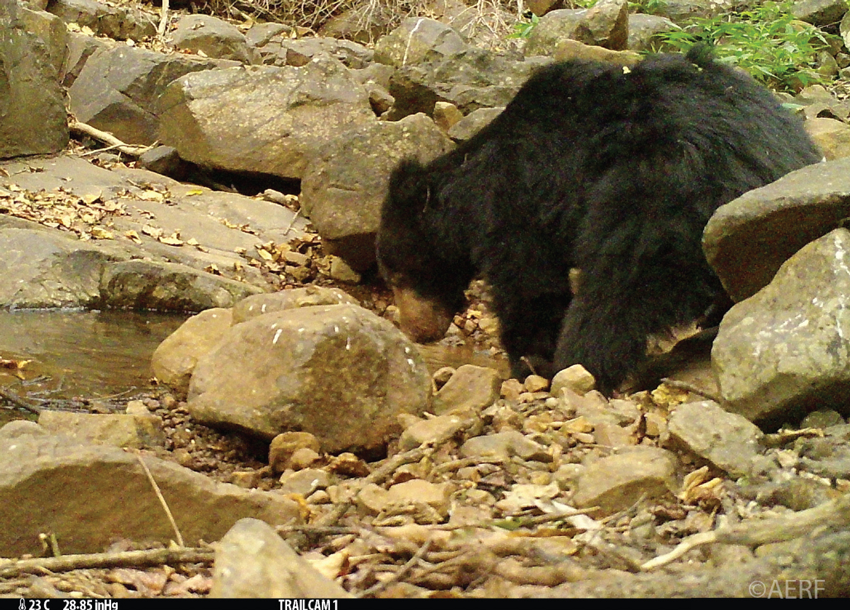In the north of India’s Western Ghats, almost every village has at least one Sacred Grove, an area of old-growth forest with both cultural and biological significance. Here, in these forests, stand some of the oldest and tallest trees in the region.
Our partner, Applied Environmental Research Foundation (AERF) are working to protect the region’s sacred groves and the secondary forests and connecting corridors that surround them. Recently an exciting species has been spotted among the trees.
A Sacred Grove with old growth forest in Western Ghats. Credit: ©Richard Cuthbert/WLT
Earlier this year AERF’s research team deployed camera traps to monitor mammal activity in the forests surrounding the Kule, Katavali, Sayale, and Khadi Kolvan villages. 10 camera traps were installed and monitored over 15 days.
The cameras recorded various wildlife sightings, but most notably, a Sloth Bear (Melursus ursinus) was spotted and recorded in Kule. This is the first time a Sloth Bear has ever been captured on a camera trap in the region.
The Sloth Bear’s presence underscores the ecological connection between the Kule Forest and the Protected Area of the Chandoli National Park, where Sloth Bears are known to occur.
The observation also highlights the significance of wildlife corridors as the Sloth Bear likely travelled from Chandoli National Park to the Kule Forest via the Phansavale Forest, which serves as a vital link between these two landscapes.
A Sloth Bear becomes the first of its kind to be photographed by a camera-trap in this region (Click image to enlarge). Credit: ©AERF
The Sloth Bear is named for its sloth like traits, including long claws, shaggy coat and lack of upper front teeth. It is a solitary and elusive species, often found roaming its forest territory at dawn, dusk and under the cover of night, emitting noisy grunts and snorts as it wanders in search of food.
Interestingly, Sloth Bears are the only bear species adapted for ant and termite-eating. They use their curved claws to dig into termite mounds, then using the gap from their missing front teeth suck termites and other insects up like a vacuum. They also pull down branches to get fruit and snuffle under debris for grubs and beetles. It may remind you of a certain Sloth Bear from The Jungle Book?
Sloth Bears are classified as a Vulnerable species on the IUCN Red List. Their population is decreasing due to habitat loss and poaching, and their home range has drastically reduced in recent years because of deforestation for timber and agriculture. Given the threats these bears face, it is more important than ever for their habitat to be protected.
The sighting of this Sloth Bear on AERF’s camera trap highlights that wildlife corridors are working. The bear’s presence demonstrates the importance of AERF’s work protecting the forests of the region, and signifies how vital these forests are to the free and safe movement of threatened species.
DISCOVER MORE ABOUT THE SLOTH BEAR
VIEW WLT FUNDED PROJECTS IN INDIA

